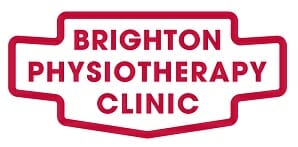Tennis Elbow
Tennis elbow is a musculoskeletal disorder that affects the outer part of the elbow at the lateral epicondyle. Tennis elbow is also known as lateral elbow tendinopathy or lateral epicondylitis. It was originally known as lawn tennis elbow in 1882 after it became classified as a medical condition.
The outer part of the elbow gets inflamed due to excessive use. This pain and tenderness can extend to the forearm in some cases causing weak grip strength. It is mostly noticed in people between 30 – 50 years old. It is also mostly observed in people who take part in sports or work activities requiring repetitive use of the forearm.
The onset of tennis elbow or pain due to a similar condition is mostly gradual. Treatment for tennis elbow mostly revolves around physiotherapy. Physiotherapy treatment is used to reduce tendinosis and relax the muscles around the forearm. With a good physiotherapy treatment, the patient regains proper use of the arm in no time. Other medical treatments are to reduce pain.
Causes and Pathogenesis of Tennis Elbow
Excessive or repetitive use of the forearm muscles is the major cause of tennis elbow. It weakens the lateral epicondyle causing it to swell up. Other causes of tennis elbow include a heavy blow to the elbow, mis-hitting a tennis ball or similar object, the regular playing of violin, and a sudden forceful pull.
When the extensor muscles of the forearm contract repeatedly, it could lead to tiny tears in the muscles. With immature repair and gradual degeneration, this leads to tendinosis of the lateral elbow. Tennis elbow is then a direct result of tendon degeneration, in which the normal tissue is replaced by a disorganized arrangement of collagen.

Treatment of Tennis Elbow
Treatment of tennis elbow depends on the severity of the symptoms. Symptoms, when left untreated, may subside within several weeks to months. The condition can also result in chronic pain if symptoms are very severe and untreated. This could affect daily activities and quality of life.
Some treatment options for Tennis Elbow include:
Physiotherapy
Physiotherapy treatment such as progressive lengthening, stretches, and rubber bar exercises help to regain full use of the affected arm. Massages and manipulation techniques also provide short-term pain relief. Besides physiotherapy, resting the affected arm can also speed up the healing process.
Use of Elbow Straps or Orthotic Devices
Orthotics devices are used for the initial intervention of tennis elbow. They limit the use of the forearm to prevent further degeneration and accelerate healing. The strap applies a binding force at the origin of the pain point. Counterforce orthosis and wrist extensor orthosis are orthotic devices particularly useful for tennis elbow.
Medication
Proper medication is used to provide short-term relief from the pain. Analgesics such as non-steroidal anti-inflammatory drugs (NSAIDs) and paracetamol are very useful in reducing inflammation too. Corticosteroid injections can also be used to reduce pain.
Surgery
In very severe cases, tennis elbow may require surgery. This is used as a last resort when all other treatment procedures have failed to resolve the condition. The surgical procedure may include denerving the lateral epicondyle, lengthening of the extensor muscles, and posterior interosseous nerve decompression. posterior interosseous nerve decompression
Get Help
Tennis elbow is a condition that may get better with time. The pain and discomfort, however, can stop you from carrying out normal activities. When left untreated, it could lead to chronic pain causing you protracted discomfort.
We provide better physiotherapy treatment that helps you regain proper control of your elbow. Contact us today for a proper assessment of the condition and to begin physiotherapy treatment immediately.
